Best Hibiscus Fertilizer For Trees – Plant Food For Blooms & Growth!
While planting hibiscus, go for a balanced fertilizer. Once the plant establishes, go for an NPK ratio with lower phosphorus content as compared to nitrogen and potassium.
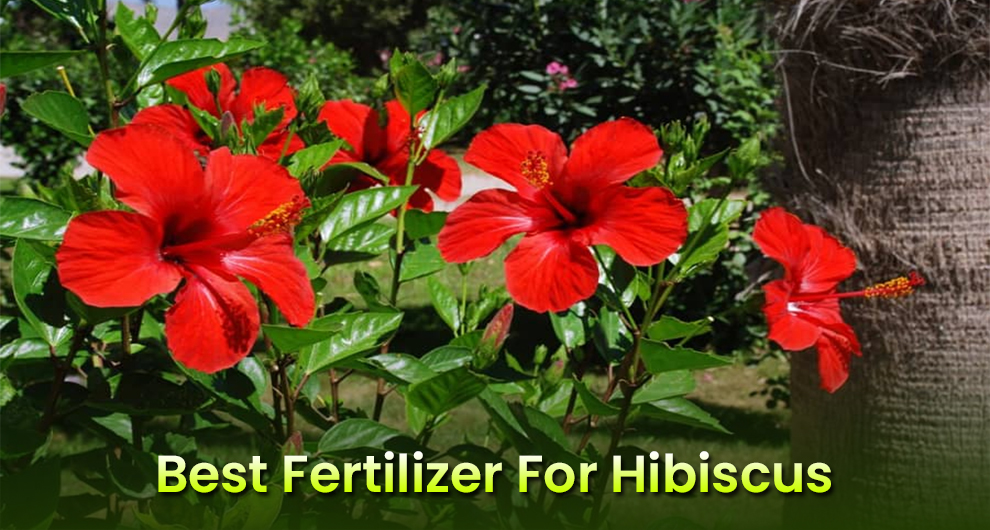
Hibiscus plants are heavy feeders and need regular feeding to thrive and yield vibrant blooms. When picking the best fertilizer for hibiscus, select one rich in potassium and phosphorous, vital nutrients for root development and flower production, respectively.
One of the top gardener-recommended feeds is Carl Pool Hibiscus Fertilizer. It has an NPK of 10-4-12 and is formulated exquisitely to cater to the unique needs of the hibiscus plant.
This has the ideal balance of nutrients, including micronutrients like manganese and iron, that help in abundant flowering and healthy growth.
As a home grower, it is imperative to choose a good fertilizer for hibiscus as it will influence the plant’s overall appearance and health.
A good quality plant food with the nutrients necessary for hibiscus to thrive is vital, but using poor-quality plant food results in fewer blooms, yellowing leaves, and stunted growth.
What Could Be The Best Plant Food For Hibiscus?
- Overall Best Pick for Hibiscus – Carl Pool Hibiscus Plant Food
- Non-GMO Fertilizer – Dr. Earth 708P Organic 9 Fruit Tree Fertilizer
- Best Granular Fertilizer – Nelson Plant Food
- Fertilizer For Potted Hibiscus Plants – BGI Fertilizers Hibisgain Bag
- Liquid Fertilizer For Hibiscus – Miracle Gro All Purpose Fertilizer
- Best Organic Fertilizer – Earthpods Premium Plant Food
- All-Purpose Hibiscus Plant Food – J R Peters 52024 Jacks Classic No.1.5
Hibiscus needs a good balance of micro and macronutrients to bloom and grow well. The three primary nutrients that hibiscus needs are phosphorous, nitrogen, and potassium, referred to as the N-P-K.
Nitrogen helps leaf growth, whereas phosphorous promotes root development and flower production. Potassium helps regulate the water balance and improve stress tolerance in plants.
The best fertilizer for hibiscus trees contains more potassium and nitrogen as compared to phosphorous.
Beyond these primary macronutrients, hibiscus also requires an array of micronutrients like molybdenum, boron, copper, zinc, manganese, magnesium, and iron in smaller quantities than the macronutrients.
However, they are still imperative for bloom production and healthy growth.
Iron is essential for chlorophyll production and photosynthesis, whereas magnesium helps the plant employ sunlight and maintain healthy cell walls.
Manganese facilitates photosynthesis and is crucial for enzyme production. Zinc is essential for cell division and protein synthesis.
Copper helps in chlorophyll production, and boron helps in cell wall development and pollination. Molybdenum aids in nitrogen metabolism and vital amino acid synthesis.
So, the best fertilizer for hibiscus blooms should have all these macro and micronutrients.
What Is The Ideal NPK Ratio For Hibiscus?
The ideal NPK for hibiscus depends on the growth stage and the plant’s specific needs. Typically, hibiscus plants need a fertilizer with higher potassium and nitrogen and a moderate portion of phosphorous.
The nutrient ratio is displayed on fertilizer packaging as a numerical sequence, always in the order of N-P-K, such as 10-10-10 or 12-4-8, representing the weight percentage of each nutrient in the fertilizer mix.
During planting and at the start of the growing season, a balanced fertilizer with an NPK ratio of 10-10-10 can provide adequate nutrients.
For regular fertilization, a plant food with an NPK ratio like 12-4-8 or 17-5-24 would be more suitable for hibiscus plants.
What Are The Different Types Of Best Fertilizers For Hibiscus Trees?
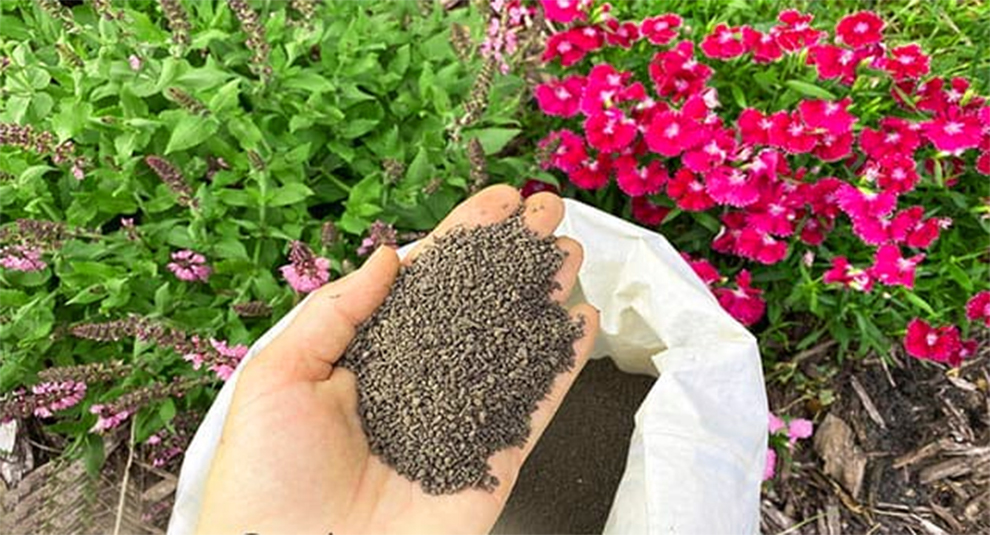
You can find several kinds of hibiscus plant foods. These include:
Synthetic fertilizers
These are composed of chemical compounds and are formulated to offer specific degrees of nutrients to plants. They work quickly and are effective in delivering nutrients directly to the roots.
They are a popular choice amongst gardeners because of their quick effectiveness and convenience. But they can harm the environment if not applied correctly or when overused, such as a nutrient imbalance in the soil, water pollution, and soil degradation.
They may also damage the non-target plant species. Hence, you must use them responsibly and follow the manufacturer’s guidelines to avoid negative implications.
Organic fertilizers
These are made from naturally occurring materials like bone meal, manure, compost, and fish emulsions. They slowly release the nutrients into the soil over time by offering a consistent supply of nutrients.
Unlike synthetic fertilizers, the best organic fertilizer for hibiscus does not cause over-fertilization, as the nutrients gradually release into the soil at a rate that plants can absorb.
In addition, organic fertilizers can accentuate soil health and structure by promoting a healthy soil ecosystem and allowing the plants to absorb water and nutrients.
Employing organic plant food is also good for the environment. It reduces the accumulation of toxic residues in the water and soil.
Slow-release fertilizers
These are also known as controlled-release fertilizers because they slowly release nutrients into the soil over an extended duration. They offer a consistent source of nutrients to the plant.
Their slow-release mechanism can lower the risk of nutrient loss and over-fertilization, as the plants can absorb the nutrients at a rate consistent with their growth requirements.
You can find both organic and synthetic options in slow-release plant foods. They are also available in pellet or granular forms. Such plant foods are ideal for gardeners seeking a steady nutrient supply while reducing the risk of over-fertilization.
Slow-release fertilizers also improve soil health by boosting microbial activity and lowering nutrient runoff.
Which Are The Best Fertilizers For Hibiscus?
The best plant food selection will depend on the plant’s growing conditions, individual preferences, and specific needs.
Regardless of what you choose, it is imperative to read through the instructions carefully to avoid over-feeding. For hibiscus tree care ensure to provide them ample light along with the right plant food.
1. Best Overall Carl Pool Hibiscus Plant Food
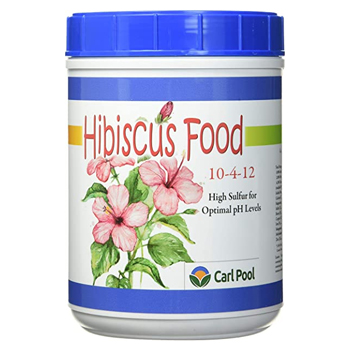 |
Check price on Amazon |
It is an excellent plant food with a 10-4-12 nutrient ratio. This well-balanced diet for hibiscus contains micronutrients like sulfur that help maintain an optimum pH for its growth.
You can apply this granular fertilizer every four to six weeks in the growing season. One application can produce new blooms and buds. However, regular reapplication can result in beautiful flowers around the year.
You can also use it on hibiscus plants suffering from transplant shock. This plant food will help the hibiscus recover and turn beautiful and lush.
Sold in the 4-pound package, gardeners love this fertilizer for its incredible balance of ingredients. When growing hibiscus in a pot, you can use 1.5 teaspoons of fertilizer for every 6-inch or gallon of the container.
Water the soil thoroughly and sprinkle evenly around the plant to work it well into the soil. It is also an excellent product if your hibiscus struggles during the winter, as this well-balanced nutrition can guard it against harsh winters.
Even though it is an excellent pick, we found two problems with this fertilizer:
- Not organic.
- It can be expensive for commercial growers.
2. Best Non-GMO Fertilizer Dr. Earth Natural and Organic Mini Exotic Blend
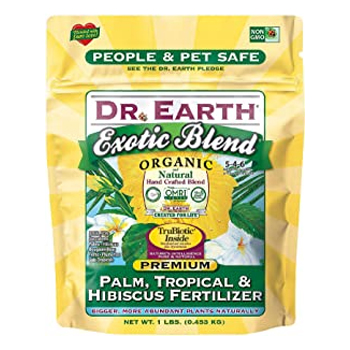 |
Check price on Amazon |
Need a plant food for hibiscus that is people and pet-friendly? This one by Dr. Earth can be a good pick. It is rich in humic acids, proteins, carbohydrates, and multi-minerals.
Dr. Earth fertilizer contains trace elements that help with soil health. You can use this plant nutrition for more vibrant and larger blooms. It has a 6-4-6 nutrient NPK ratio.
You can make the fertilizer tea by adding five cups of fertilizer to five gallons of water. Allow the mix to sit for one day. Strain the mixture, and you have it ready for use as mulch. You can also use the liquid through soil application or foliar.
Some gardeners even prefer using it as a compost starter to accentuate the compost pile. If you have an established hibiscus plant, you can use ½ of fertilizer for every food of plant height.
After fertilizing, water your hibiscus flower varieties deeply. You can repeat the application every two months between early spring and late summer.
You can add one cup of fertilizer to the planting hole and another to the soil around the plant base for new planting.
But for the established varieties, use two tablespoons for a six-inch diameter pot. Two tablespoons of fertilizer in the soil will suffice for potted, new hibiscus.
Do check the pH after feeding. It should be between 5-6.5 for apt results. It is an OMRI verified and the only non-GMO fertilizer in America with zero toxic or chemical ingredients.
However, it has an unpleasant smell that can be off-putting for many. Some users even complained of mold growth after the application.
3. Best Granular Fertilizer Nelson Plant Food
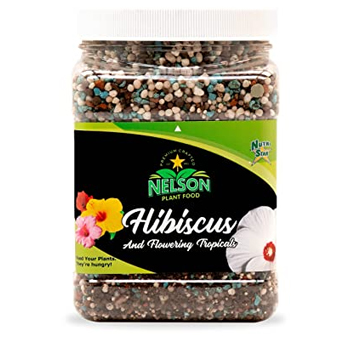 |
Check price on Amazon |
This plant food has an NPK of 10-4-12 and is an excellent nutrition source for any hibiscus variety. It also contains iron, magnesium, and sulfur, but its high potassium content can promote bigger and bolder blooms.
You can use it monthly once in the growing season for excellent growth. Its NutriStar formula amplifies the growth rate of vines and helps with heavy blooming. This fertilizer can also accentuate the plants’ tolerance against dry weather.
One of the standout features of this granular formula is that it offers the best nutrition to the plant instantly, and its slow-release nature guarantees long-term benefits.
You can use one tablespoon of fertilizer for every gallon of the container. You can also employ it during transplantation. This fertilizer is beneficial for both in-ground and container hibiscus.
4. Best For Potted Plants BGI Fertilizers Hibisgain Bag
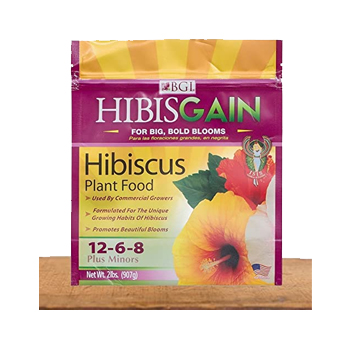 |
Check price on Amazon |
It is an exquisitely designed plant food for hibiscus that supports their growing habits. You can use it for commercial and home gardening. The fertilizer has a 12-6-8 NPK ratio and contains several essential minor nutrients.
You will not have to mix this plant food but apply it directly to the soil. For potted hibiscus, the fertilizer rate depends on the pot size. For every six-inch pot, you can feed one tablespoon of fertilizer.
You cannot employ the foliar application and opt for soil application, but evenly sprinkle the fertilizer. If the fertilizer drops accidentally on the leaves, you must wipe it off immediately to avoid any leaf injury.
Regular application helps achieve large colorful flowers and glossy green leaves. It ensures the blooms last longer and allows the plant to bloom across the season.
You can fertilize once every growing season for healthy flowers. It is an excellent product but can be costly.
5. Best Liquid Fertilizer For Hibiscus Miracle Gro All Purpose Fertilizer
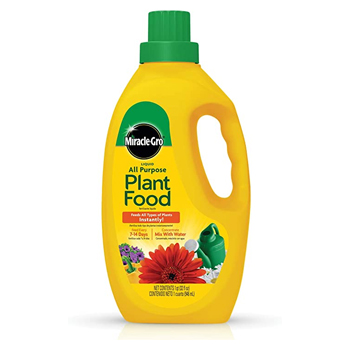 |
Check price on Amazon |
It is an excellent all-purpose liquid fertilizer that instantly gives the plant the nutrients necessary to flourish. You can use it once every one to two weeks for big and beautiful results.
It can be employed on outdoor and indoor container plants or in the garden. Before using, shake the bottle well and measure the amount based on the area. You must check the manufacturing label before application.
6. Best Organic Fertilizer Earthpods Premium Plant Food
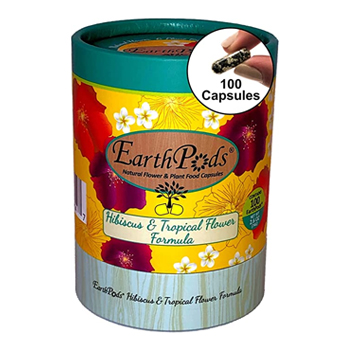 |
Check price on Amazon |
Organic products promote a healthy soil biome and diversity that feeds the plants naturally. It has a mild 0.2-0.2-0.4 NPK ratio.
In addition, the mix also contains humic acid, 70 trace elements, and an array of beneficial microbes.
These elements improve soil organic matter, keep bacteria and fungi away, accentuate nutrient transfer from the soil to the plant, and boost native fertility. It is easy to use.
You can insert the capsule into the soil, and that is it. Every pack contains 100 capsules.
7. Best All-Purpose J R Peters 52024 Jacks Classic No.1.5
 |
Check price on Amazon |
Lastly, it is excellent plant food for indoor plants, vegetables, surf, and trees. It feeds the leaves and the roots. The formula contains an optimum 20-20-20 NPK ratio that ensures rapid leaf expansion and quick green-up.
You can use it for indoor hibiscus care to keep the hibiscus plant green & bloomy.
Related: How long do hibiscus plants live?
Best Homemade Fertilizer For Hibiscus
You can find several homemade plant foods for hibiscus plants. A few options include:
Eggshell Fertilizer
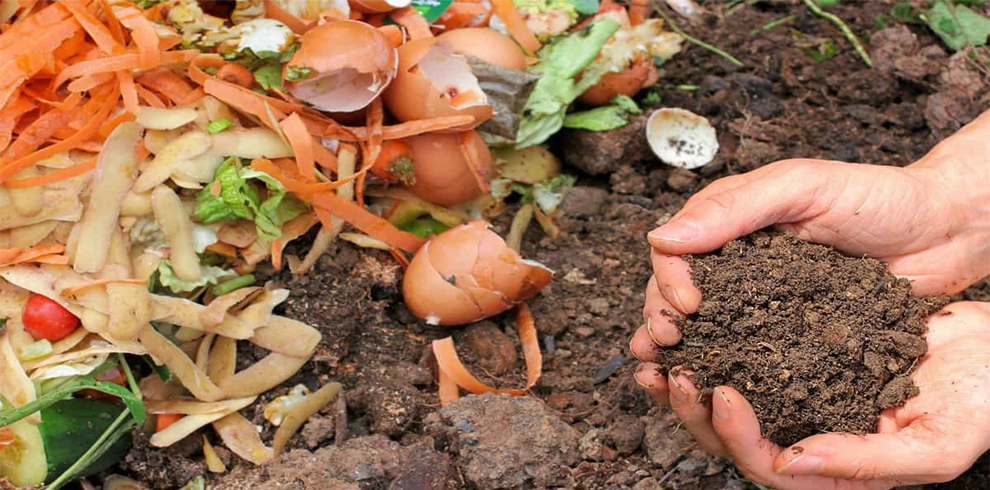
Crush the eggshells and sprinkle them around the base. The shells are rich in calcium and improve plant health and soil quality.
Compost Tea
Steep compost in water for a few days and utilize the liquid to water the hibiscus plants. The tea is rich in beneficial microorganisms and nutrients. It can improve soil health and offer necessary nutrients to plants.
What Does Epsom Salt Do For Hibiscus Plants?
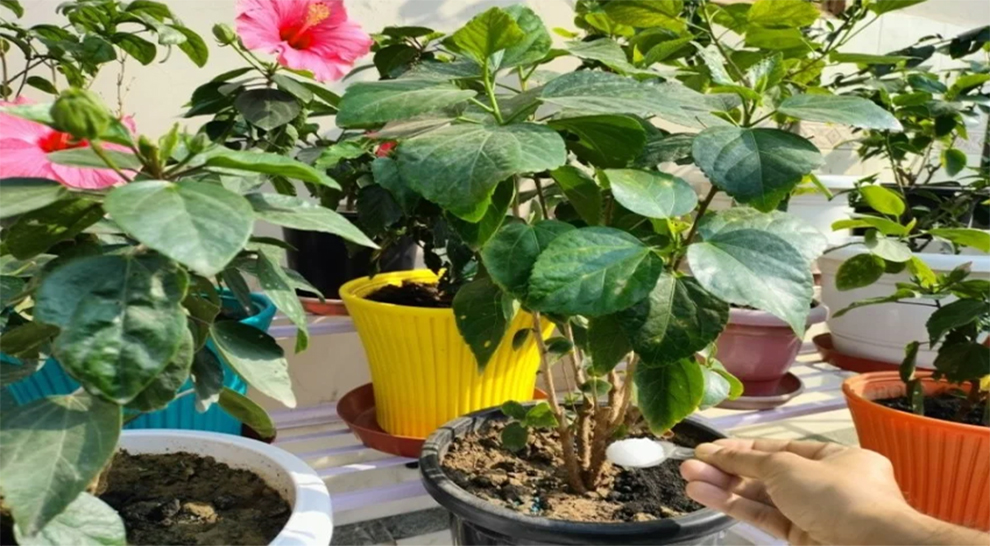
Also known as magnesium sulfate, Epsom salt benefits the hibiscus plant in several ways:
- It is a good source of sulfur and magnesium that helps the plant grow and thrive.
- Magnesium helps in chlorophyll formation and helps with photosynthesis.
- Sulfur is crucial for some amino acids that are building blocks of proteins and help in plant development.
- Epsom salt can also boost soil structure and nutrient uptake, ensuring more robust and healthier growth.
- It also helps avoid the yellowing of leaves.
How to use Epsom salt for hibiscus plants: Dissolve Epsom salt in water and use it for watering the hibiscus. It is rich in magnesium and can help boost flower production and healthy foliage growth.
Are Used Coffee Grounds Good For Hibiscus Plants?
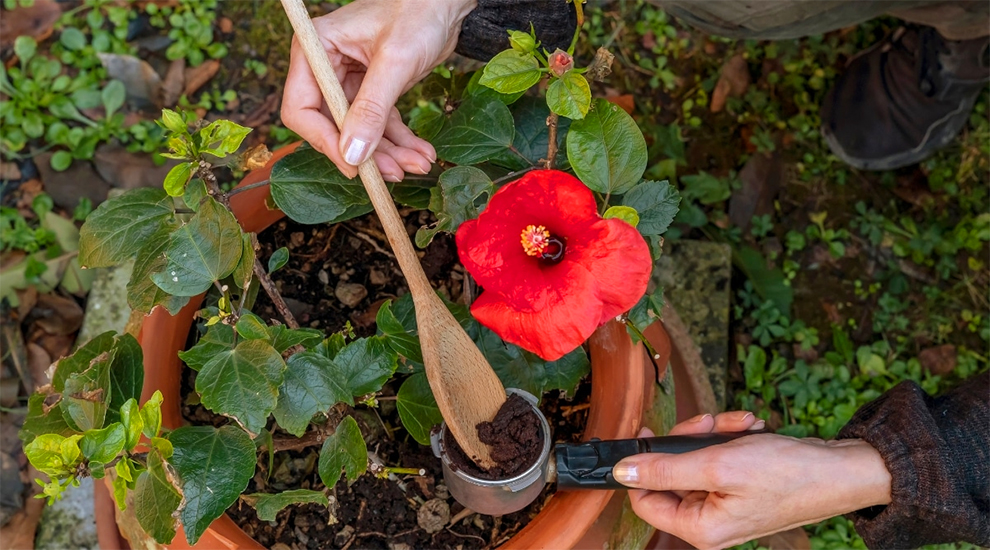
Yes.
Used coffee grounds can be excellent for hibiscus plants:
- They contain nutrients that help with plant health and growth.
- They are rich in phosphorous, potassium, nitrogen, and other minerals, making them an excellent organic matter for the soil.
- Coffee grounds can boost water retention, drainage, and soil fertility.
- They also aid in disease prevention and pest control, as they contain caffeine and other compounds toxic to some fungi and insects.
However, use them in moderation as they can lead to nitrogen burn and soil acidity in access.
Are Banana Peels Good For Hibiscus Plants?
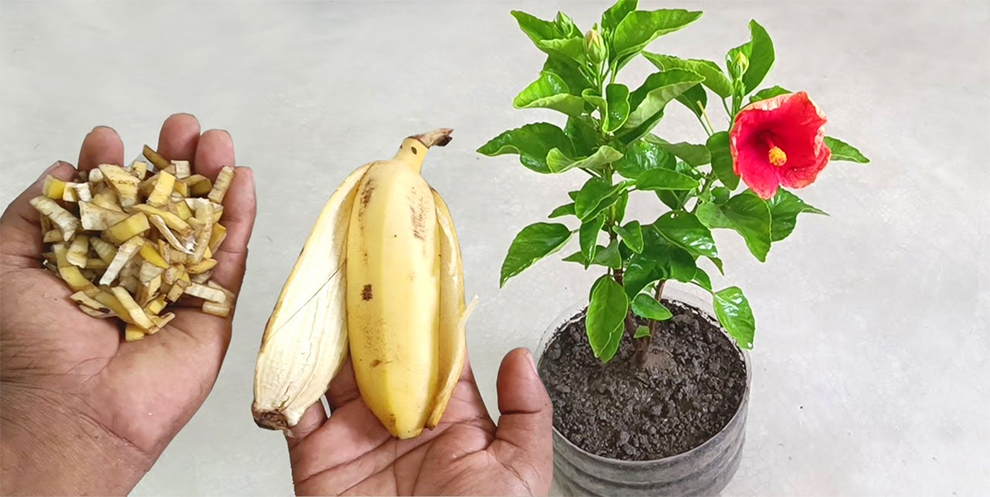
Yes.
Banana peels can be one the best homemade fertilizer for hibiscus because the peel is a rich source of potassium, a vital nutrient for plant growth and flowering. Potassium strengthens the roots and stems, promotes flower and fruit development, and improves drought tolerance.
Using Banana Peel Fertilizer: You can soak the banana peels in water. Later, strain the water and use it on your hibiscus plants.
Is Onion Peel Water Good For Hibiscus Plants?
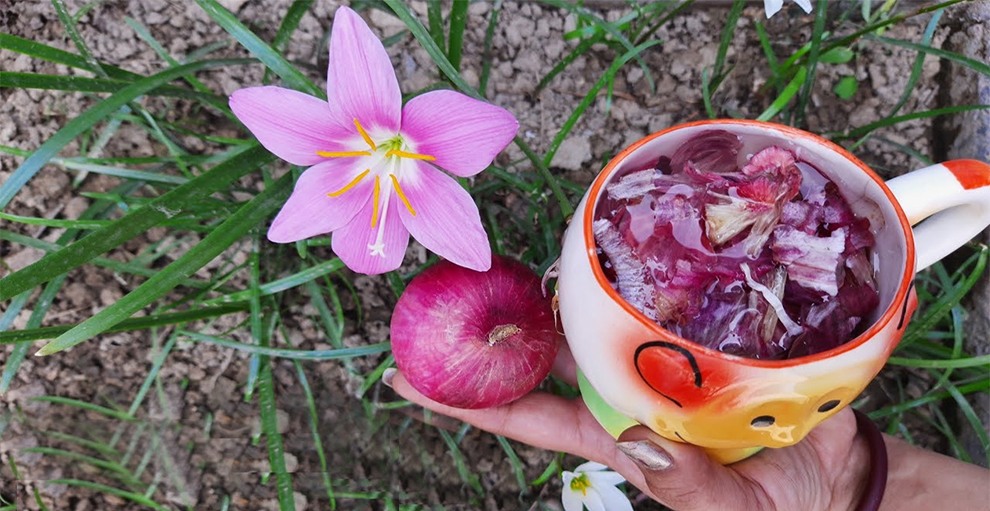
Typically, onion peel water is not good for use as fertilizer for hibiscus plants.
Even though the peel has nutrients, like potassium and calcium, that benefit the plants, they also contain substances that harm the plants in high concentrations, such as tannins and sulfur compounds.
Thus, they negatively impact the health and growth of hibiscus plants, such as stunted growth and yellowing of leaves.
How and When To Use The Best Plant Food For Hibiscus?
- The dosage depends on the plant food for hibiscus utilized because different fertilizers have different concentrations of nutrients. You must follow the instructions on the label to avoid overfertilization or damage to the plant.
- When is the best time to fertilize the hibiscus: Growing season (spring through summer) is the ideal time to fertilize the hibiscus. Further, the active growth phase (late winter to early fall) can also be a suitable time to fertilize the hibiscus. Do not feed in the winter.
- Application techniques: You can apply the hibiscus plant food in several ways.
- One method is sprinkling the pellets or granules into the soil around the plant and watering thoroughly.
- You can also mix the plant food with water and apply it to the soil around the plant.
- If you are using slow release plant food spikes. Just insert the spikes in the soil and let it do its magic.
Regardless, do not get the fertilizer on the flowers or leaves as that can cause damage or burning. To avoid burning the roots, water the plant before and after fertilizing.
Crucial Tips For Fertilizing Hibiscus Plants
- Pick the correct fertilizer with an NPK ratio like 12-4-8 or 17-5-24.
- Apply it during the growing season from late spring to early fall.
- Do not apply in the dormant winter months.
- Follow the application rate on the packaging label to avoid overfertilizing or harming the plants.
- Evenly distribute the plant food around the base. Do not apply to the stems or leaves.
- After fertilizing, immediately water the plants to distribute the nutrients and avoid fertilizer burn.
- Opt for organic foods like fish emulsion or compost. They offer a slow-release formulation and improve soil health.
- Watch out for overfertilization signs, such as stunted growth or yellowing leaves.
